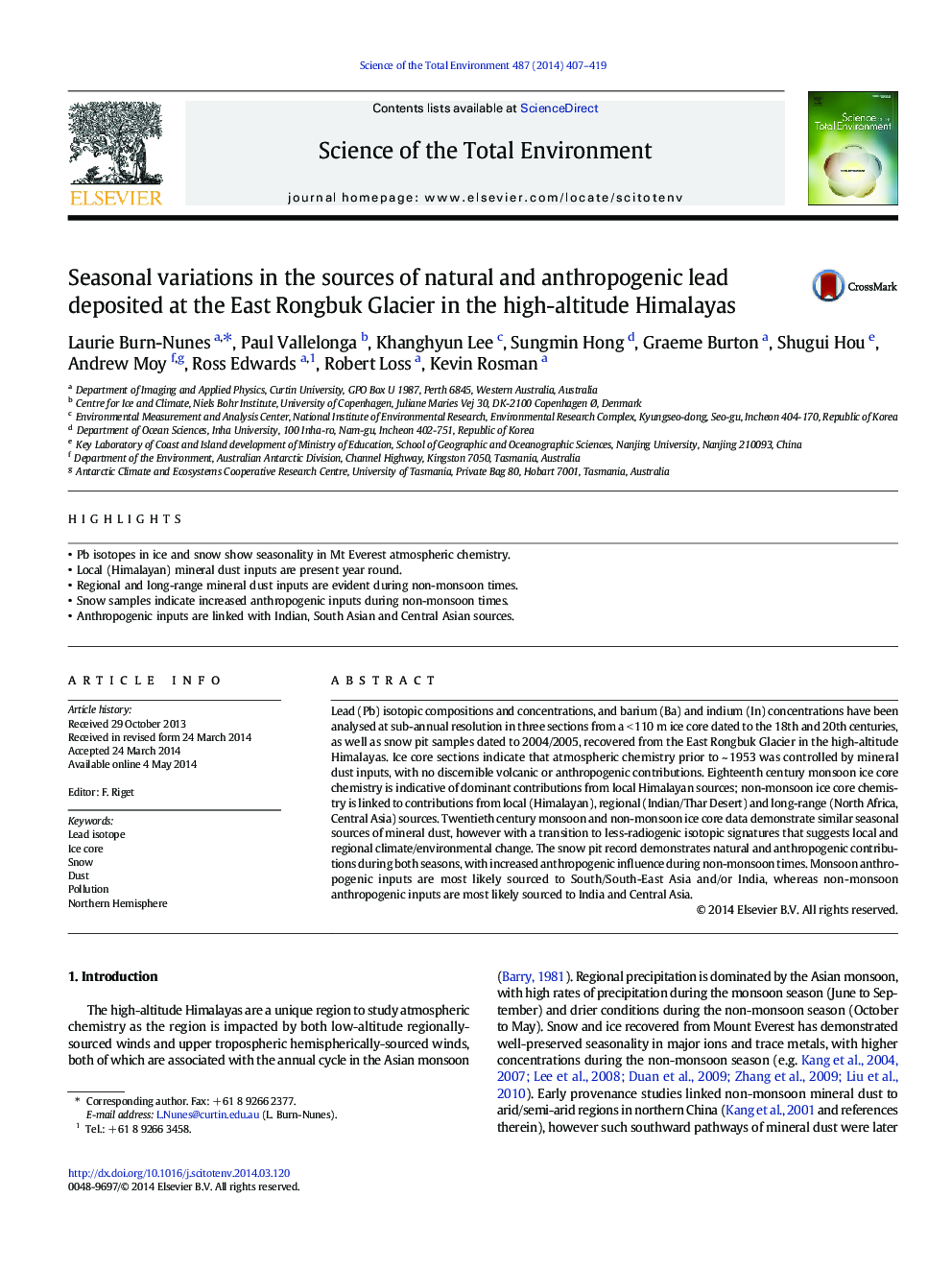| Article ID | Journal | Published Year | Pages | File Type |
|---|---|---|---|---|
| 6329960 | Science of The Total Environment | 2014 | 13 Pages |
Abstract
Lead (Pb) isotopic compositions and concentrations, and barium (Ba) and indium (In) concentrations have been analysed at sub-annual resolution in three sections from a <Â 110Â m ice core dated to the 18th and 20th centuries, as well as snow pit samples dated to 2004/2005, recovered from the East Rongbuk Glacier in the high-altitude Himalayas. Ice core sections indicate that atmospheric chemistry prior to ~Â 1953Â was controlled by mineral dust inputs, with no discernible volcanic or anthropogenic contributions. Eighteenth century monsoon ice core chemistry is indicative of dominant contributions from local Himalayan sources; non-monsoon ice core chemistry is linked to contributions from local (Himalayan), regional (Indian/Thar Desert) and long-range (North Africa, Central Asia) sources. Twentieth century monsoon and non-monsoon ice core data demonstrate similar seasonal sources of mineral dust, however with a transition to less-radiogenic isotopic signatures that suggests local and regional climate/environmental change. The snow pit record demonstrates natural and anthropogenic contributions during both seasons, with increased anthropogenic influence during non-monsoon times. Monsoon anthropogenic inputs are most likely sourced to South/South-East Asia and/or India, whereas non-monsoon anthropogenic inputs are most likely sourced to India and Central Asia.
Related Topics
Life Sciences
Environmental Science
Environmental Chemistry
Authors
Laurie Burn-Nunes, Paul Vallelonga, Khanghyun Lee, Sungmin Hong, Graeme Burton, Shugui Hou, Andrew Moy, Ross Edwards, Robert Loss, Kevin Rosman,
